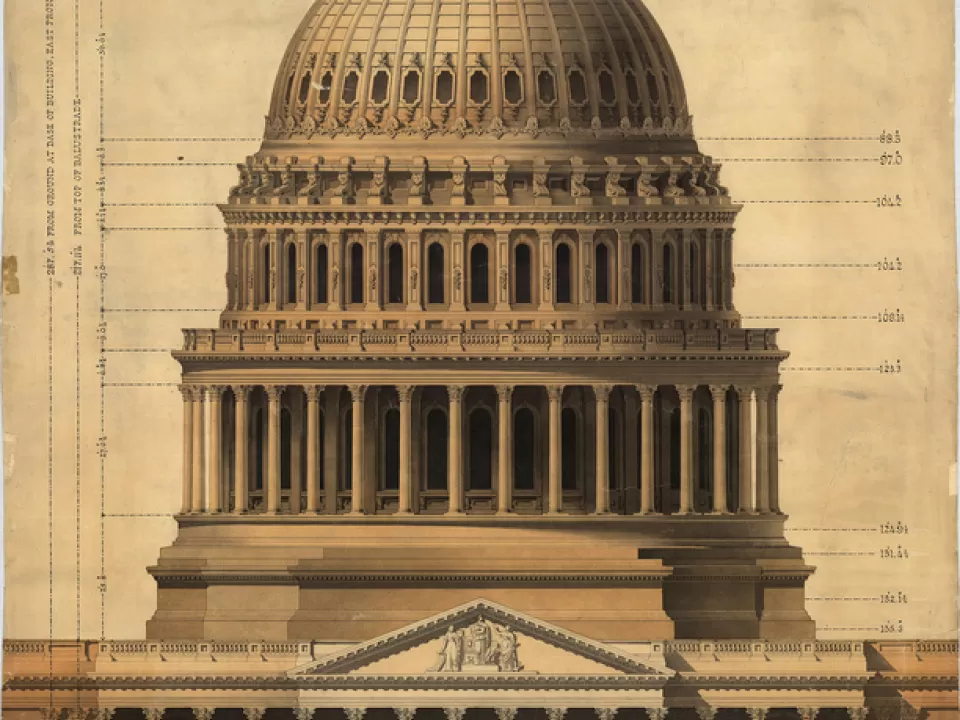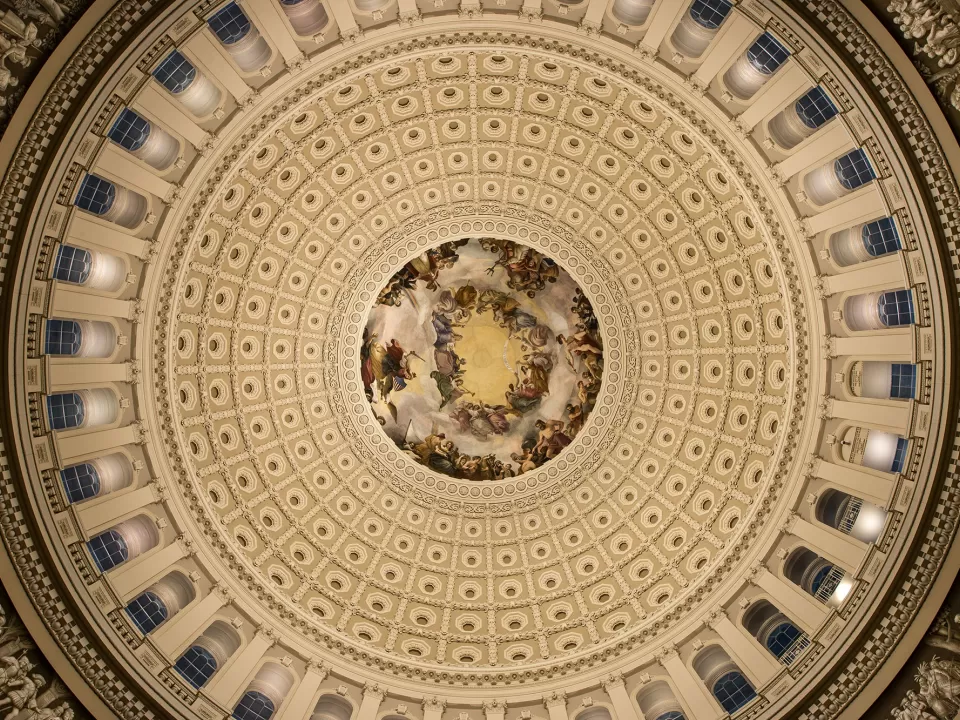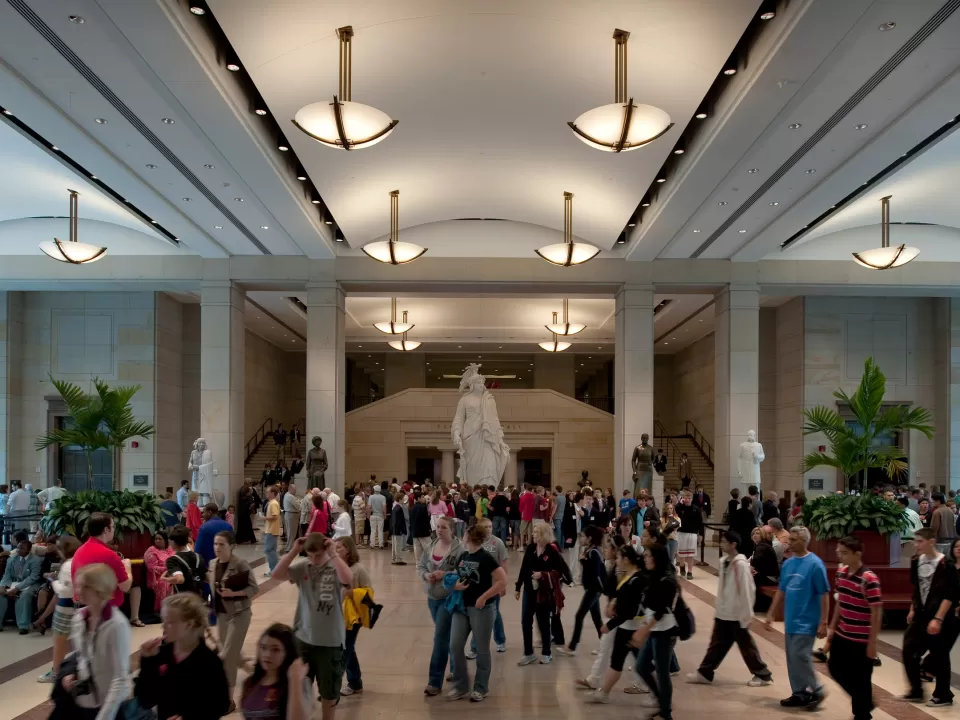When did the Congress first meet in the Capitol Building?
November 17, 1800.
U.S. Capitol Building Spaces
Inside the U.S. Capitol Building
Capitol Crypt
This center section of the building was completed in 1827 under the direction of the third Architect of the Capitol, Charles Bulfinch.
Capitol Dome
The U.S. Capitol’s dome made of cast iron was designed by Thomas U. Walter and constructed from 1856-1866 at the total cost of $1,047,291.
Capitol Rotunda
Conceived in the age of neoclassicism, the Rotunda was intended to recall the Pantheon, the ancient Roman temple. Bulfinch created in the U.S. Capitol Rotunda an ambitious orchestration of architecture, sculpture and painting.
Capitol Subway System
The U.S. Capitol subway consists of three lines: two on the Senate (north) side of the Capitol, and one on the House (south) side of the Capitol.
U.S. Capitol Visitor Center
The U.S. Capitol Visitor Center is the newest addition to the historic Capitol Complex. At nearly 580,000 square feet, the Visitor Center is the largest project in the Capitol's more than two-century history and is approximately three-quarters the size of the Capitol itself.




